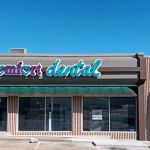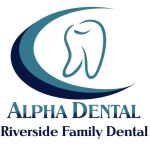Dental Emergency Care: What You Need to Know
Dental emergencies can happen at any time, often without warning. Whether it's a sudden toothache, a broken tooth, or an accident that knocks out a tooth, knowing how to handle dental emergencies and when to seek professional dental emergency care can make all the difference. In this article, we’ll explore common dental emergencies, their potential causes, and the steps you should take to protect your oral health until you can receive care. We’ll also share advice on how to find reliable emergency dental services when you need them the most.
1. Common Dental Emergencies
Dental emergencies can range from minor discomfort to situations that require immediate professional attention. Some of the most common dental emergencies include:
Each of these issues can be painful and potentially dangerous if left untreated, so it’s important to recognize the signs and seek the appropriate dental care right away.
2. Toothaches: Causes and Immediate Relief
Toothaches are one of the most common dental emergencies and can be caused by a variety of factors such as tooth decay, gum infection, or a cracked tooth. The pain can range from mild to severe, and it can often be a sign of an underlying issue that needs professional treatment.
To alleviate the pain temporarily, you can rinse your mouth with warm salt water and apply a cold compress to the affected area. However, it's crucial to visit a dentist as soon as possible to diagnose the cause and receive appropriate treatment. Ignoring a toothache can lead to more severe problems such as infections or abscesses.
3. Broken or Chipped Teeth: What to Do
A broken or chipped tooth can occur due to trauma or biting down on something hard. Not only is it painful, but it can also affect the appearance of your smile and lead to further complications if not treated properly. If you break or chip a tooth, try to collect any broken pieces and rinse your mouth with warm water to clean the area. If the area is bleeding, apply gauze to stop the bleeding.
Dental emergency care may include repairing the tooth with a dental filling, bonding, or even a crown, depending on the severity of the break. A dentist will be able to determine the best course of treatment to restore the tooth and prevent further damage.
4. Knocked-out Tooth: Immediate Action
If your tooth is knocked out, time is of the essence. The first thing you should do is retrieve the tooth carefully, avoiding touching the root. Rinse it gently with water to remove dirt, but do not scrub or remove any attached tissue. If possible, place the tooth back in its socket, but if that’s not possible, store it in a cup of milk or your saliva to keep it moist.
Visit an emergency dentist immediately—ideally within 30 minutes of the injury. The sooner the tooth is re-implanted, the higher the chances of saving it. In some cases, a dentist may be able to reattach the tooth and ensure it heals properly.
5. Loose or Lost Fillings: How to Handle
Fillings can become loose or fall out due to decay, wear, or trauma. If a filling comes out, it exposes the inner part of your tooth to bacteria, leading to potential infection or further damage. If you notice a loose or missing filling, try to keep the area clean by rinsing your mouth with warm water and avoiding eating on that side of your mouth.
In some cases, a temporary dental filling or dental cement may help protect the tooth until you can see a dentist for a more permanent solution. It’s important to make an appointment with your dentist as soon as possible to prevent complications such as infections or worsening decay.
6. Dental Abscess: Causes and Symptoms
A dental abscess is a painful infection that can form at the root of a tooth or in the gums. It’s often caused by untreated cavities, gum disease, or a cracked tooth. Symptoms include severe tooth pain, swelling, redness, and fever. An abscess can be a serious condition that requires immediate dental care to drain the infection and prevent it from spreading to other areas of the body.
If you suspect you have a dental abscess, do not delay treatment. Your dentist will likely drain the abscess, clean the area, and possibly prescribe antibiotics to clear up the infection. In some cases, the tooth may need to be extracted to fully resolve the issue.
7. When to Seek Dental Emergency Care
If you experience any of the above dental emergencies, it's crucial to seek professional dental emergency care as soon as possible. While temporary measures like pain relief and cleaning can offer some comfort, only a dentist can provide the necessary treatment to address the root cause of the problem.
Some signs that indicate a dental emergency includes persistent pain, bleeding that doesn’t stop, or signs of infection such as swelling and fever. Don’t hesitate to contact your dentist or visit an emergency dental clinic to receive prompt care and avoid long-term complications.
Conclusion: Be Prepared for Dental Emergencies
Dental emergencies can be distressing, but knowing what to do and having access to emergency dental care can make a significant difference in your pet’s comfort and long-term oral health. By recognizing the signs of common dental emergencies, you can take immediate action to minimize damage and pain until professional help is available.
To learn more about how to protect your oral health and receive expert dental care in times of need, visit Dentistry Toothtruth for reliable dental advice and services.







 Comfort Dental South Independence – Your Trusted Dentist in Independence4.0 (334 review)
Comfort Dental South Independence – Your Trusted Dentist in Independence4.0 (334 review) Chaska Family Dental4.0 (266 review)
Chaska Family Dental4.0 (266 review) Gentle Family Dentistry5.0 (60 review)
Gentle Family Dentistry5.0 (60 review) Tend East Nashville4.0 (319 review)
Tend East Nashville4.0 (319 review) Riverside Family Dental4.0 (431 review)
Riverside Family Dental4.0 (431 review) Second Street Dental4.0 (423 review)
Second Street Dental4.0 (423 review) The Importance of Oral Health Education During Pregnancy for a Healthy Pregnancy
The Importance of Oral Health Education During Pregnancy for a Healthy Pregnancy Best Tips for Brushing Your Teeth Properly for Healthy Gums: Essential Techniques for Oral Health
Best Tips for Brushing Your Teeth Properly for Healthy Gums: Essential Techniques for Oral Health Why Skipping Dental Checkups Can Lead to Bigger Oral Health Problems
Why Skipping Dental Checkups Can Lead to Bigger Oral Health Problems Advantages of Porcelain Dental Restorations
Advantages of Porcelain Dental Restorations How Can Diabetes Cause Tooth and Gum Problems? Preventing and Managing Oral Health Issues
How Can Diabetes Cause Tooth and Gum Problems? Preventing and Managing Oral Health Issues Healthy Habits for Promoting Good Oral Health and Hygiene: Tips for a Healthy Smile
Healthy Habits for Promoting Good Oral Health and Hygiene: Tips for a Healthy Smile